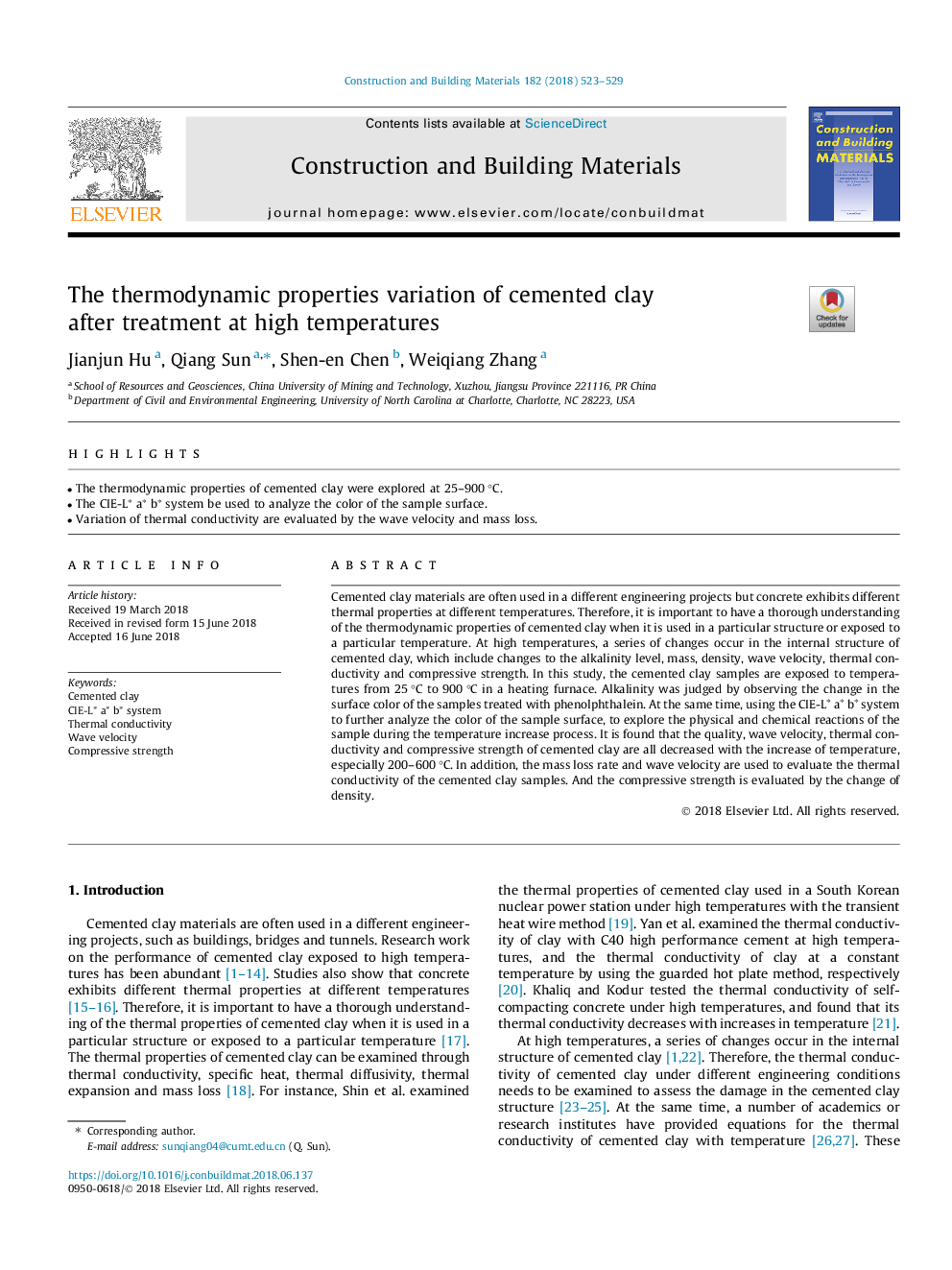| Article ID | Journal | Published Year | Pages | File Type |
|---|---|---|---|---|
| 6712276 | Construction and Building Materials | 2018 | 7 Pages |
Abstract
Cemented clay materials are often used in a different engineering projects but concrete exhibits different thermal properties at different temperatures. Therefore, it is important to have a thorough understanding of the thermodynamic properties of cemented clay when it is used in a particular structure or exposed to a particular temperature. At high temperatures, a series of changes occur in the internal structure of cemented clay, which include changes to the alkalinity level, mass, density, wave velocity, thermal conductivity and compressive strength. In this study, the cemented clay samples are exposed to temperatures from 25â¯Â°C to 900â¯Â°C in a heating furnace. Alkalinity was judged by observing the change in the surface color of the samples treated with phenolphthalein. At the same time, using the CIE-Lâ aâ bâ system to further analyze the color of the sample surface, to explore the physical and chemical reactions of the sample during the temperature increase process. It is found that the quality, wave velocity, thermal conductivity and compressive strength of cemented clay are all decreased with the increase of temperature, especially 200-600â¯Â°C. In addition, the mass loss rate and wave velocity are used to evaluate the thermal conductivity of the cemented clay samples. And the compressive strength is evaluated by the change of density.
Related Topics
Physical Sciences and Engineering
Engineering
Civil and Structural Engineering
Authors
Jianjun Hu, Qiang Sun, Shen-en Chen, Weiqiang Zhang,
